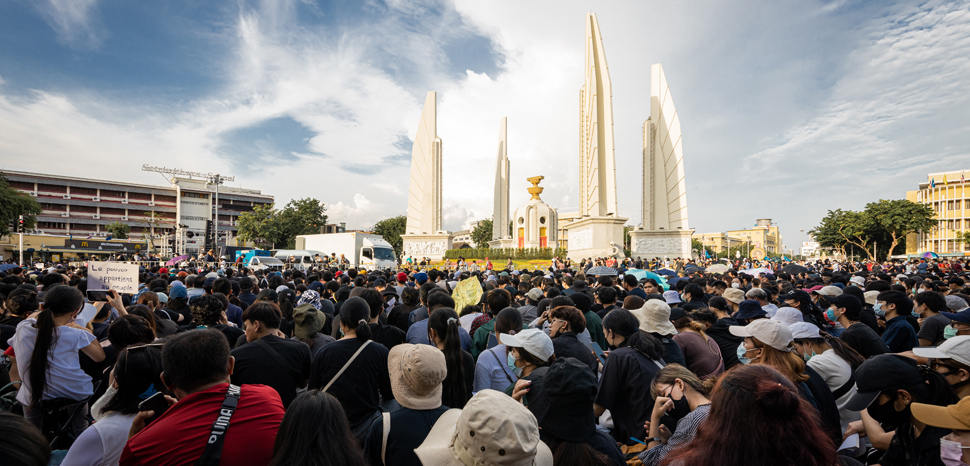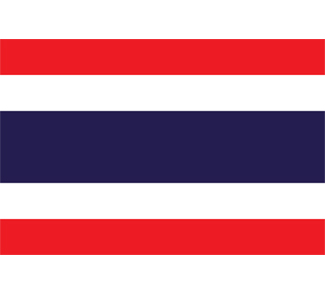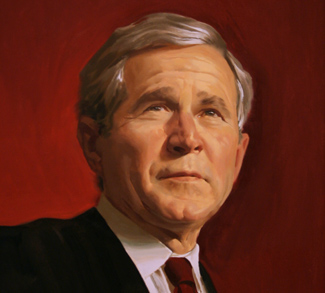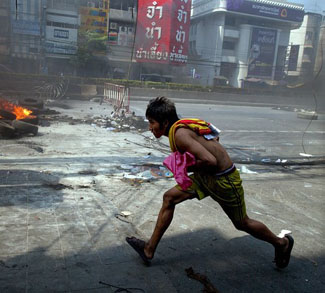Recent political turmoil in Thailand has broken many of the taboos surrounding its once-revered monarchy. The youth-led social movement that has demanded the resignation of Thailand’s Prime Minister Prayut Chan-o-cha has also submitted a list of reforms calling for substantive changes to the monarchy, including the repeal of its draconian lèse majesté laws, which forbid the insult of the monarch and have been used as a weapon to silence dissent. Reforms also call for more transparency and accountability as well as banning the monarch from endorsing political coups, which is a frequent occurrence.
In an era where social norms are changing and old institutions of power are struggling to hold on to public legitimacy, it is important to assess how Thailand ended up at this point. How did a monarchy that had become a revered institution—personified by a young, charismatic king, whose image decorated the homes of millions of Thais—find itself in a crisis of legitimacy in such a short span of time? To answer this critical question, it is essential to trace the rise, dominance and the precipitous decline of the monarchy under King Maha Vajiralongkorn.
The restoration of the monarchy began under Field Marshal Sarit Thanarat, forming an alliance with Bhumibol Aduledej, building a template for legitimacy and prestige for the young monarch. Repealing the 1954 land reform measures that weakened the monarchy under the previous reign of Phibun Phibunsongkhram, Sarit promoted a cult of personality around Bhumibol, bringing back royal traditions and practices, such as prostration. The 1932 Constitution that relegated the Chakri dynasty from an absolute monarchy to a constitutional one was repealed and replaced with a 1959 version, which granted the prime minister power to take action against anything that would disturb the peace or undermine state security, including the power to arrest and execute anyone the government deemed a threat. Draconian laws were implemented and political activities were repressed.
The military and the monarchy were now symbiotically tied together, wrapped in a cloak of anti-Communism and moving further away from the ideals of a generation ago. The military-monarchy alliance forged deeper ties with the United States, which pumped billions in development and infrastructure improvements into Thailand. The early 1960s began a golden age for the Thai economy, where exports soared and wealthy families and corporations were protected from the ravages of competition, while the poor were told to live humbly and simply. It was the beginning of an economy that today places Thailand atop the list of countries with the worst wealth inequality.
Field Marshal Sarit, a heavy drinker, soon passed away in 1963, but his brief tenure altered the course of the monarchy and set up a system that Thailand has come to know all too well. It has developed an illiberal system, with unlimited power to make constitutional and institutional changes, controlled by a network of royalists with tentacles spread across sectors of Thai society. He was immediately replaced by Thanom Kittikachorn, who by that time could not match the stature of Sarit or of King Bhumibol, who had accumulated significant political and moral capital.
Thanom’s rocky tenure as prime minister would coincide with virulent anti-communism and the rise of popular discontent. Citing the need to suppress the threat of communism, he staged a coup against his own government and made himself the head of his own National Executive Council. Rebellion would soon follow in the form of student-led protests, which spread to the general public. Thai people, much like today, called for a return to a more democratic form of government and a new Parliament. The October 14, 1973 uprising, which saw students fleeing a brutal government response to protests, also saw King Bhumibol’s stature rise further via his dissolution of the Thanom regime and his iconic opening of the Chitralada Palace gates to the students fleeing the government crackdown.
The restoration of democratic rule in Thailand did not last long, as Thanom’s return in 1976 as a Buddhist monk had alarmed the students who had worked diligently and at great cost to defeat him. The monarchy’s anti-communist fears also led to the dissemination of right-wing propaganda and the formation of paramilitary groups like the Village Scouts, who were supposed to provide a citizen defense against communist threats. At their peak in 1978, 2.5 million Thais, or 5 percent of the total population, had completed the training required to become a Scout. The monarchy endorsed and supported the Scouts, who were heavily involved in countering the pro-democracy protests of the mid-1970s. Their involvement in the 1976 Thammasat University massacre cannot be overlooked.
King Bhumibol, after the events of 1976, had become the chief arbiter of political crises which continued long through his seven-plus decade rule. Thailand fell into a repeating pattern of coups and counter-coups in 1977, 1981, 1985, and 1991, but the monarch did not interfere in any of them.
This changed during the bloody “Black May” events of 1992, which occurred after Suchinda Kraprayoon overthrew the government of Chatichai Choonhavan. Forming the National Peacekeeping Council, Suchinda eventually appointed himself prime minister. Public protests followed, led by retired General Chamlong Srimuang and Bangkok crept closer to chaos with ugly displays of violence. However, it was King Bhumibol who settled the dispute, calling Chamlong and Suchinda before him in a televised public lecture. Suchinda resigned and the crisis was averted. The monarchy’s role as the chief arbiter in political crises was maintained and Bhumibol’s stature and moral authority was once again confirmed.
While Bhumibol would approve of the coups that brought down the Thaksin and Yingluck Shinawatra eras in Thai politics in 2006 and 2014, his rule would be characterized mainly as a “network monarchy” where the monarch ruled through a series of proxies rather than directly. Advancing age and declining health saw Bhumibol soon retreat from public life until his death in October 2016. The years of cultivating a revered and exalted public image did not immediately transfer to Vajiralongkorn, who has a much different style than his father.
In a very short space of time, Vajiralongkorn moved to establish control over billions of dollars of Crown Property Bureau assets and took command of the 1st and 11th Infantry Regiments, based in Bangkok. He has taken stakes in major Thai companies such as Siam Commercial Bank and Siam Cement, as well as vast amounts of land. Public legitimacy cannot be transferred as easily as a royal title. Vajiralongkorn has not cultivated the same public image, partly due to his preference for direct rule and his public absence from Thailand, spending considerable time in Germany.
The erosion of public legitimacy cannot simply be laid at the feet of Vajiralongkorn, but at the military-monarchy alliance as a joint institution. Thai people have become accustomed and frustrated with the never-ending pattern of interference in political affairs, notably during periods of democratic rule. The overthrow of Thaksin in 2006 sparked political protest and a violent state response. Political unrest in 2014 was another justification for military intervention, which led to brutal state responses to dissent. Democratic constitutions were replaced with authoritarian versions, which favored both the military and the monarchy. Public anger grew when the Future Forward Party, which attracted a large youth following, was banned along with its charismatic young leader, Thanathorn Juangroongruangkit.
With the present unpopularity of the Prayut government and of Vajiralongkorn, it can be easily misread that protesters want to do away with the monarchy altogether, but that would be a gross mischaracterization. Anxieties are driven by the perception that Thailand under Vajiralongkorn could return to its absolute form, as evidenced by speeches from protest leaders. While challenges were rare under Bhumibol, they are ever present and likely to remain under Vajiralongkorn, who will need to adapt the institution to fit with the changing dynamic. Extra-constitutional interventions, personified by royal endorsements of military coups, will no longer be tolerated. Legitimacy can only be restored through transparency, accountability, and working in concert with a democratic Thai civil society rather than against it. Gone are the days when extreme forms of Thai nationalism, expressed as anti-communism or the restoration of “happiness” can subdue Thai civil society. To survive, Thailand’s monarchy must change with the times.
The views expressed in this article are those of the authors alone and do not necessarily reflect those of Geopoliticalmonitor.com or any institutions with which the authors are associated.




